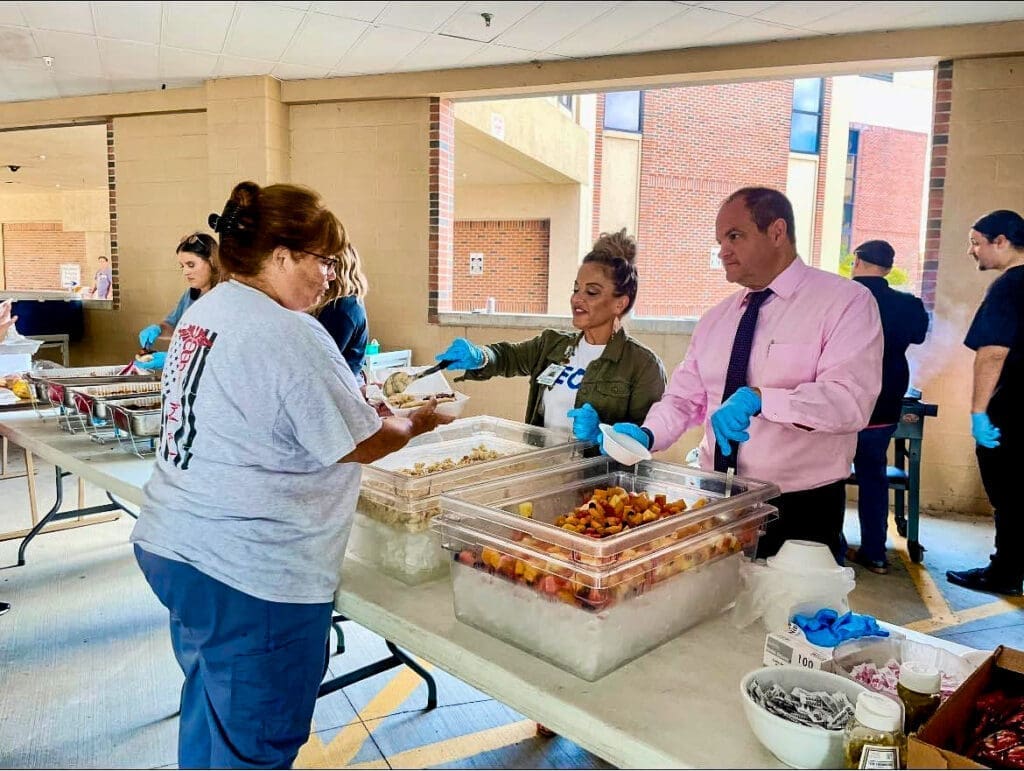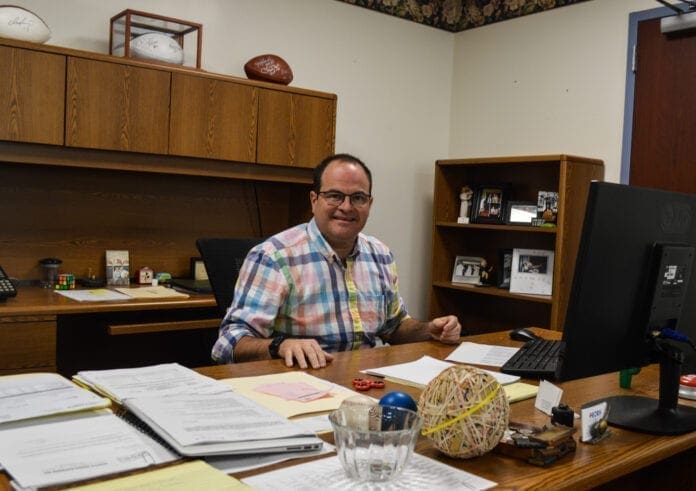Some lights flickered, a few of the floor tiles were crackled far more than he remembered, and the hospital’s hallways smelled stale instead of, well, like “hospital clean.”
Not even in the distance were there beeps of life or flatlines of dismissal, but Bernie Albertini could hear memorable echoes of Martins Ferry’s medical facility in full operation when he walked back in after two years away in Arizona. East Ohio Regional Hospital was suddenly shuttered in October 2019, and there he was, six months later, calculating a resurrection.
After a little more than 20 years with EORH and the Ohio Valley Medical Center, Albertini accepted a position at the Canyon Vista Medical Center in Sierra Vista, Arizona soon after Alecto Healthcare took over ownership of both hospitals.
“I’ve told a story to a lot of people about the first day Alecto took over and I’m sitting with (the executives) and they’re talking about this emergency box and I don’t know what they’re talking about. Is it a crash cart? And they said, ‘No, it’s the emergency box,’” Albertini said. “I asked them what was in the box, and they said a hammer, a whistle, a glow stick? I told them that we had never had emergency boxes, and they said they would move on with their review, but they told me to get them on every floor.

“About an hour later, it hit me,” he said. “That’s when I went back to those Alecto inspectors, and I asked if we could revisit the conversation. I asked them if these emergency boxes were needed for earthquakes, and they said yes. Talk about a red flag. I knew we were in trouble, so …”
He got out. That’s what he did. Albertini went West.
“It was an opportunity for something completely new and different, so we went for it after so many years here with all of the challenges that come with operating a non-profit hospital. That’s not easy. Not at all,” the chief operating officer explained. “And it was. It was completely different, but we did miss the valley and the people. And then the phone rang.”
At the end of the line was Dr. John Johnson, a psychiatrist by trade and an entrepreneur at heart. The people in the Wheeling area heard his name, though, involved the 12-story former headquarters for the bankrupt Wheeling-Pittsburgh Steel Corporation. Once the final liquidator, RG Steel, was finished selling off the last scraps of the once-world-famous steel producer, the structure fell silent for the first time since opening in 1907.
Although Wheeling Mayor Glenn Elliott announced more than five years ago a project that would transform the city’s tallest building into loft apartments, very little progress has been made by the contractor, Coon Restoration and Sealant from the Canton, Ohio area.
Johnson then purchased the shuttered hospital in early 2020.
“When I first spoke with Dr. (John) Johnson and he told me he wanted to reopen the hospital with the Covid pandemic taking place, I didn’t know how to react,” Albertini recalled. “I didn’t know the shape of the building either because I was in Arizona for a little more than two years. The hospital is not a new building and there are a million different things that can go wrong.
“But I came home and, yeah, there were challenges. There were a lot of challenges, actually,” he said. “But a lot of great people stepped up to make it happen, and the City of Martins Ferry really stepped up for us, too. It’s hard to believe it will be three years in just a couple of months. That’s hard to believe.”

Small Town Care
The third anniversary of the reopening is in early February, but Albertini doesn’t need birthdays to remind him of the lofty list of goals Johnson tossed into his lap.
Managing an operating hospital is one thing, but transforming a used, neglected property into an updated, state-of-the-art medical facility that checks all the local boxes has been, let’s say, difficult and demanding. Now, Albertini began in OVMC’s pharmacy, and from there he accepted supervisory roles in food service, building maintenance, institutional development, and highest-level management, so he went into the EORH project will experience in all areas.
“I would say in some ways we’re where I thought we’d be at this point, but in other ways, no, not yet. As far as the business is concerned, I believe we’re ahead of where I thought we’d be right now, and I think it’s because of how popular our emergency room has been,” he said. “Our ER was open for about six minutes and we had our first call into service, so, yeah, the demand was there for sure.

“I think Dr. Johnson is very happy because his whole vision was to bring back local healthcare, and I think he’s been successful with doing that so far. And I think he was successful in doing that,” he said. “He’ll tell you his goal is for a small community hospital to not only survive, but also thrive, and I believe we’re on our way to fulfilling that goal.”
The emergency room was first, and a fully staff, fully operational medical facility followed.
“The ER is the front door for every hospital,” Albertini said. “It had to be Goal No. 1, but once we got our ER squared away, everything else would have to fall into place. We all knew that once that ER opened, we had to be ready for everything inside our hospital, and they were 100 percent ready and deserve all the credit. It was a very good day when our hospital opened.
“It was a very good thing for the entire area, really, because we lost two hospitals all of a sudden right before a pandemic. When Alecto closed both OVMC and East Ohio, there was a crush on the local health care system and it wasn’t easy on anyone,” he explained. “So, it was a great thing to get this community hospital back up and running.”


